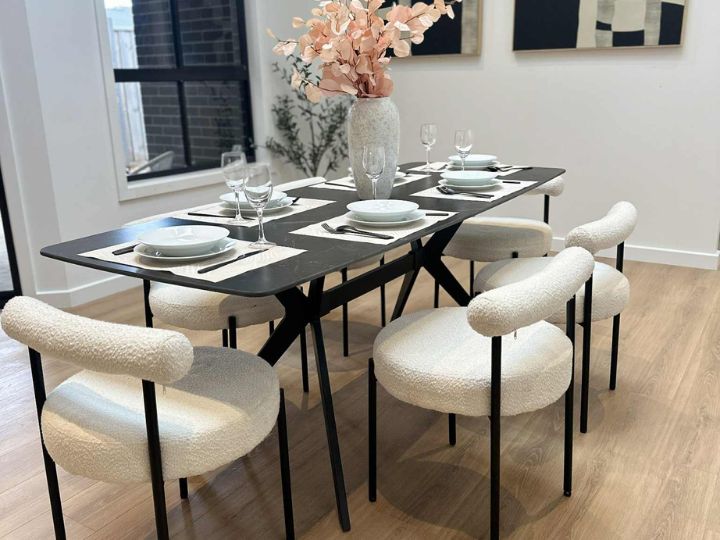
How to Stage Your Home for Sale: Practical Tips That Work
Selling your home is more than just putting up a “For Sale” sign—it’s about creating an environment where potential buyers can instantly imagine themselves living. That’s where home staging comes in. Done well, staging can highlight your property’s strengths, downplay its weaknesses, and maximise its appeal. Whether you’re working with professional home staging experts or taking a DIY property styling approach, the right strategy can make all the difference. From enhancing kerb appeal to smart property organisation, staging your home is an investment that can help you achieve a faster sale and a higher price.
Why Staging Your Home Matters
Staging is not just about looks—it’s about psychology. Buyers often decide within minutes whether a property feels right for them. An uncluttered, beautifully styled home can trigger an emotional connection that makes them more likely to make an offer. First impressions matter, and staging ensures your property stands out in a competitive market.
Focus on Kerb Appeal
The exterior is the first thing potential buyers see, so make it count. A freshly mown lawn, tidy garden beds, clean pathways, and a welcoming front door all set the tone. Consider repainting fences or adding potted plants to boost the street appeal. Even small details, like polished house numbers or a new doormat, can make your home more inviting.
Declutter and Deep Clean
Nothing turns buyers off faster than mess or dirt. Remove personal items, excess furniture, and anything that makes spaces feel cramped. Invest time in a deep clean—windows, carpets, skirting boards, and bathrooms should all sparkle. Decluttering not only makes your home feel larger but also allows buyers to imagine their belongings in the space.
Lighting Makes a Difference
Good lighting transforms a property. Open curtains to let in natural light, replace dim or outdated lightbulbs, and add lamps to create warmth. Bright, well-lit rooms feel more spacious and welcoming, while darker corners can make a home seem smaller.
Styling the Interiors
Property styling focuses on highlighting the best features of each room. Choose a neutral colour palette with soft furnishings that add texture and warmth. Arrange furniture to showcase space and flow, and use accessories like artwork, rugs, or cushions for a polished finish. If a room feels small, consider removing or repositioning furniture to open it up.
Stage Key Rooms
Some areas of the home matter more than others. Focus your efforts on:
Living room – Make it feel open and inviting with balanced furniture placement.
Kitchen – Clear benchtops, add a bowl of fresh fruit, and ensure everything is spotless.
Bedrooms – Create a restful retreat with fresh linen, neutral tones, and minimal clutter.
Bathroom – Add fresh towels, a stylish soap dispenser, and remove personal items.
Create a Sense of Space
Staging can help your home feel bigger. Clever storage solutions, furniture placement, and minimal décor reduce visual clutter. Organised cupboards and wardrobes also send a signal that the home has been well maintained—yes, buyers will peek inside. Even a small “junk room” can be styled into a useful study or guest bedroom.
Don’t Overdo It
Staging should feel natural, not forced. Avoid large or costly renovations, overly bold colours, or overcrowding with décor. On inspection day, make sure the home feels lived in but not cluttered. If in doubt, consult with a professional home staging service for guidance.
Consider Repairs and Touch-Ups
Small repairs go a long way. Fix dripping taps, squeaky doors, or chipped paint. Buyers notice the little things, and a well-maintained home signals value and care. A fresh coat of paint in neutral tones can also make interiors feel fresh and modern.
Professional Staging vs DIY
While DIY staging is budget-friendly, professional home staging can take your property presentation to the next level. Experts bring in rental furniture, artwork, and accessories designed to appeal to buyers, creating a cohesive and aspirational look. For higher-end properties, professional staging can be a worthwhile investment.
Virtual Staging
If you’re selling online, virtual staging can help buyers see the potential of vacant spaces. Digital furnishings and styling are cost-effective compared to physical staging, but should always look realistic to maintain trust with buyers.
How Much Does Staging Cost?
Costs vary depending on property size, location, and the level of styling required. On average, staging a small apartment might cost between $2,000–$3,000, while a larger home could range from $5,000–$10,000. Virtual staging is a more affordable option, often costing only a few hundred dollars. Think of staging as an investment—often the final sale price outweighs the cost.
Staging on a Budget
If you’re trying to keep expenses down, there are plenty of cost-effective options:
Use your own furniture but rearrange for better flow.
Add inexpensive soft furnishings from local retailers.
Borrow or hire key pieces to elevate important rooms.
Apply a fresh coat of paint in neutral shades.
Focus on cleaning, decluttering, and property organization to maximise appeal.
Final Touches
Before an open home or inspection, add those finishing details: fresh flowers, a scented candle, or background music can all help create a warm atmosphere. Remember—buyers aren’t just purchasing a house, they’re imagining a lifestyle.
